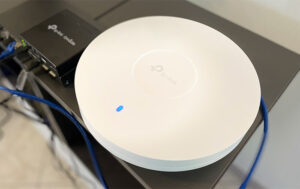Start by sweeping away dirt from the window frame and sill. Then, dampen a washcloth and wipe the frames.

Use a commercial cleaner to remove mineral deposits from windows with hard water stains. It’s available in a variety of forms, including sprays and liquids. However, if you need some professional help, you can contact Window Cleaning Bradenton FL.
Wipe the solution off your window using a squeegee. Start at the upper corner and pull straight down, wiping the squeegee clean after each swipe.
If the frames, sills and hardware are dusty, wet them with a soft brush or vacuum cleaner’s brush attachment before cleaning the windows. This prevents the loose dirt from becoming a muddy mess when mixed with the window cleaner.
Then, wipe up any excess water on the window frame and sill with an absorbent lint-free cloth, such as an old kitchen towel or linen napkin. This step will help prevent streaking on the glass. If there are mineral deposits on the window sill, try using a special product, such as CLR. Dampen a sponge with the product and rub at the stains to remove them. Rinse the area and dry it with a clean cloth.
For stubborn stains or spots, make a paste from water and a nonabrasive cleaner. Apply the paste to a clean, lint-free cloth and gently rub at the stain. Rinse the area and clean the rest of the window as usual.
To avoid streaks, vary the direction in which you wipe the windows while cleaning them. If you work on the same side of each window all the time, you may end up with streaks in the middle of the pane. To help prevent streaks, use a microfiber cloth and start at the top of the window and move in a zigzag pattern across the entire surface.
After the window has been thoroughly cleaned, it is ready to be dried. You can use a squeegee with rubber lip or a clean, dry microfiber cloth to ensure that the glass is completely dry and streak-free. For an extra shine, you can also use a piece of newspaper.
When starting your own window cleaning business, it’s important to take it one step at a time and dedicate enough time to each project to get the job done well. With a strong business plan and consistent effort, you’ll soon be marketing yourself and closing clients. Just remember to set aside some time each week to learn new skills and build your business. Visit your NerdWallet My Settings page to see all of the writers you’re following.
Cleaning the Glass
Getting your windows squeaky clean requires more than a spray bottle and a cloth. You’ll need a cleaning solution that cuts grease, grime and airborne contaminants. The best option is a commercial window cleaner, available at large hardware stores or cleaning supplies shops that specialize in professional products.
Before cleaning your windows, sweep up any dust and debris, preferably with a soft-bristled broom. That will prevent the dirt from turning into a muddy mess when mixed with soap and water. Afterwards, wipe down the frames and sills with warm, soapy water and a lint-free towel. For stubborn dirt spots, try a nonabrasive solvent like mineral spirits on a lint-free cloth or sponge. You can also soak a paint stripping pad or razor blade in acetone to remove sticker residue or to get rid of dried tree pitch or bug droppings. Just be sure to test any abrasive compounds on a corner of the frame or a piece of scrap glass first.
When it’s time to clean the actual glass, drape a canvas drop cloth on the floor to protect it from drips and spills. Spray the window with cleaning solution from a distance of no more than about 6 inches, working toward the top to avoid overspraying and damaging the edges or non-glass surfaces. Wipe the solution off with a dry, lint-free cloth or squeegee, starting at the top of the window and working your way down to the bottom to avoid streaking.
Once the squeegee is completely dry, you can replace the screens and reattach the frame to the sash. For windows that are hard to reach, consider using a telescoping pole equipped with microfiber cloths at the head and extending more than 5 feet. It’s better than teetering on a ladder, and you can adjust the length of the pole to suit your needs.
When it comes to drying your windows, forget paper towels and opt for a lint-free microfiber cloth instead. These are super-absorbent and can be laundered without fabric softener, which can coat the microfibers and leave behind lint particles. You can find them at large hardware or home centers, at specialty cloth suppliers or online.
Cleaning the Screens
Window screens trap a lot of dirt and grime, especially during the winter when windows are shut tight and the air doesn’t circulate. This dirt often ends up in the cracks and crevices of the screen where it becomes caked on and acrid. Regular cleaning of window screens prevents this buildup and keeps them clean so you can see out your windows in comfort.
To get the best results when cleaning window screens, remove them and lay them flat on a tarp or outside in a sunny area. This makes it easier to wash them and ensures they’re dry before you put them back in place. You’ll need a few supplies to do this, including a handheld vacuum with a brush attachment (or a hose and soft-bristled brush) and a bucket of water + dish soap solution.
Start by using the brush attachment on your vacuum to loosen up the loose dust and dirt. Then use a sponge dipped in the cleaning solution to scrub each screen until it’s clean. Rinse off the dirty suds with a hose that’s on a low pressure setting and let the screen dry completely before re-installing it in your window.
If your screens are really dirty, you may need to do a more thorough cleaning by removing them and putting them in a bathtub or shower where it’s easy to rinse off with a removable shower head. A little bit of our hot water and powdered Tide recipe will work well here. You can also loosen sticky residue from labels or tape by soaking it in a product like Goof Off that’s available in the paint department at hardware stores and home centers. You can then scrape off the residue with a razor blade.
To keep your window screens clean, add this chore to your cleaning rotation at least every other month or so. If you need a more thorough cleaning, give them a bath in the fall and spring when they’re most dirty, and then do another deep cleaning with a bucket of water and a few squirts of detergent in the summer before they become covered in dust.
Cleaning the Sash
The sash of your window is the part that moves up and down. Whether you have double- or single-hung windows, cleaning the sash is straightforward as long as it’s not blocked or obstructed by curtains or blinds. Begin by removing any curtains or blinds. This makes it easier to access the glass and frames, and allows you to inspect for rust or other signs of disrepair.
Next, remove the sash from its frame and set it aside in a safe location. Using a cloth soaked in clean water, wipe all the surfaces of the sash, including the frame and grids. Make sure to use a soft, non-abrasive scrubber or sponge and apply light pressure. Rinse the scrubber or sponge often to prevent buildup of dirt and grime.
Once the sash is clean, dry it thoroughly. Begin with one of the top corners and work your way down, wiping the squeegee dry in between strokes. Be sure to check the drainage holes in the bottom of the sash and ensure they are clear.
To prevent drips, wash the interior glass first, then the exterior. Be careful not to let soapy water drip onto other parts of the building, such as window screens or woodwork. This can cause them to become dull and dingy, making the entire building look dirty.
Once both sashes are cleaned, they can be re-hung in the frame. If your window has a tilt-wash mechanism, move it inward to allow you to clean the outside of the upper and lower sash. Otherwise, follow the manufacturer’s instructions for opening and tilting the sash.
In addition to making the job easier, cleaning sash windows regularly helps prolong the life of your windows. If you notice any signs of wear and tear, such as sagging timber or loose paint, be sure to repair them right away to keep your windows looking their best for years to come. And, if you’re not comfortable climbing up a ladder to clean your windows, consider hiring a professional cleaner. They will be able to take care of the toughest cleaning jobs while keeping your home safe and beautiful.
